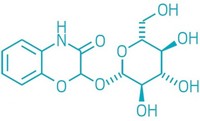Advertisement
Grab your lab coat. Let's get started
Welcome!
Welcome!
Create an account below to get 6 C&EN articles per month, receive newsletters and more - all free.
It seems this is your first time logging in online. Please enter the following information to continue.
As an ACS member you automatically get access to this site. All we need is few more details to create your reading experience.
Not you? Sign in with a different account.
Not you? Sign in with a different account.
ERROR 1
ERROR 1
ERROR 2
ERROR 2
ERROR 2
ERROR 2
ERROR 2
Password and Confirm password must match.
If you have an ACS member number, please enter it here so we can link this account to your membership. (optional)
ERROR 2
ACS values your privacy. By submitting your information, you are gaining access to C&EN and subscribing to our weekly newsletter. We use the information you provide to make your reading experience better, and we will never sell your data to third party members.
Business
Proteomics Technique Could Improve Foie Gras
Food Chemistry: Controlling duration of duck overfeeding may help retain fat
by Carmen Drahl
November 15, 2011

Preparing the duck liver delicacy foie gras may soon become a more predictable experience, if a new hypothesis from French scientists turns out to be correct. The researchers found metabolic signatures that they say predict whether fat loss during cooking a given liver will be low, which is a mark of good quality, or high (J. Agric. Food. Chem., DOI: 10.1021/jf203058x). They suggest that lowering durations of duck overfeeding required to make foie gras may keep fat loss in check.
Each year, France alone produces more than 20,000 tons of foie gras, according to People for the Ethical Treatment of Animals. Despite the food industry’s efforts, a reliable way to reduce variability of fat loss during cooking has been elusive. That may be because most biochemical studies of foie gras quality focus on lipids.
Going against the mainstream, Caroline Molette of the Graduate School of Life Sciences of Toulouse (ENSAT) and colleagues instead examined the role of metabolic enzymes. They analyzed proteins extracted from duck livers with mass spectrometry. Livers with low fat losses during cooking contained an abundance of enzymes involved in anabolic pathways, thought to be an early adaptation to overfeeding. In contrast, livers with high fat loss had high levels of proteins involved in fending off oxidative stress.
Kristin Hollung, who conducts proteomic studies of meats for the Norwegian Institute of Food, Fisheries & Aquaculture Research, praised the team’s ability to extract a testable course of action from proteomic data. “The effect of this feeding intervention of course remains to be proven,” she says, but it will be important to raise awareness of the hypothesis with food producers.




Join the conversation
Contact the reporter
Submit a Letter to the Editor for publication
Engage with us on Twitter